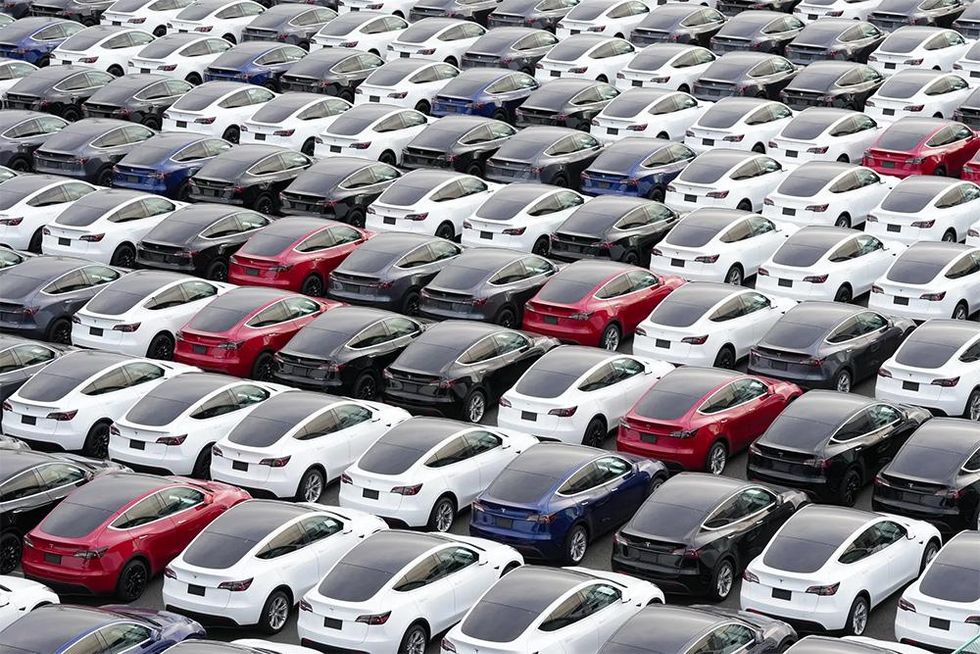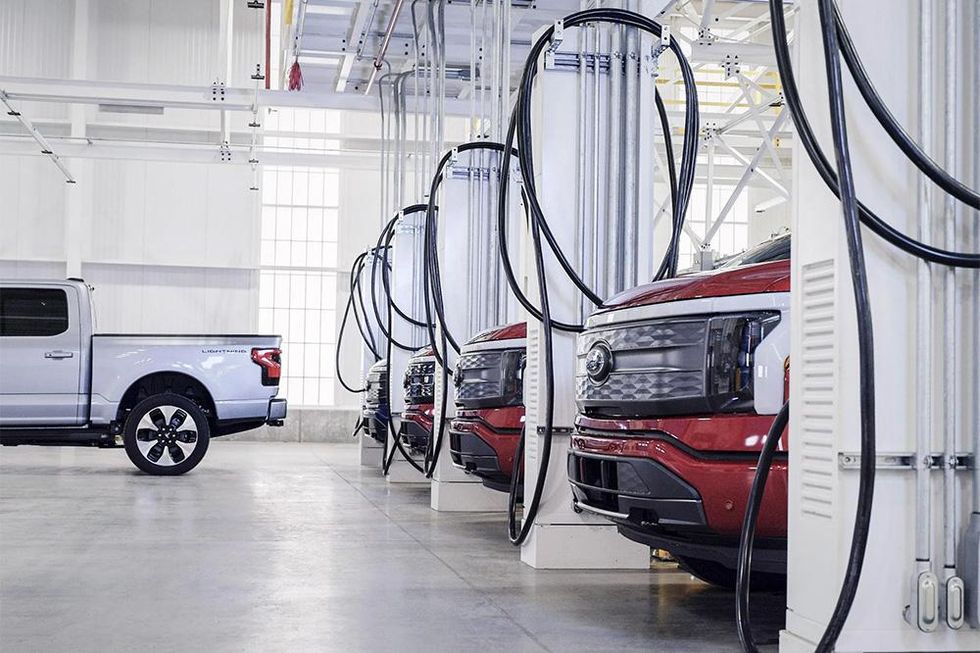The Aftershocks of the EV Transition Could Be Ugly

The introduction of any new system causes perturbations within the current operating environment, which in turn, create behavioral responses, some predictable, many not. As University of Michigan professor emeritus and student of system-human interactions John Leslie King observes People find ways to use systems for their own benefit not anticipated by designers and developers. Their behavior might even be contradictory to hoped-for outcomes."
Change rides on the rails of what doesn't change," King notes, including people being self-serving."
The EV Transition ExplainedThis is one in a series of articles exploring the major technological and social challenges that must be addressed as we move from vehicles with internal-combustion engines to electric vehicles at scale. In reviewing each article, readers should bear in mind Nobel Prize-winning physicist Richard Feynman's admonition: For a successful technology, reality must take precedence over public relations, for Nature cannot be fooled."
As we noted early in the series, EVs are a new class of cyberphysical systems that dynamically interact with and intimately depend upon both energy and information systems of systems to function. When used as the catalyst to fundamentally transform an economy in a decade like the Biden Administration desires, EVs profoundly change both concurrently, affecting society on the scale of a magnitude 8.3 earthquake followed by the 1,700 foot mega-tsunami it creates.
Nothing in modern society operates without reliable access to both energy and information, and they are connected in ways we do not fully understand. Agitate one or the other, let alone both simultaneously, without comprehending or actively planning contingencies for how the countless and frequently fragile interactions between them will be affected, is asking to be unpleasantly surprised by the aftershocks created. Creating far-reaching technology policy first and then figuring out the myriad of engineering details needed to implement it second, is always going to be a high-risk strategy that needs an appropriate level of wariness.
The perturbations caused by transitioning EVs to scale are not market-driven, but government policy-driven to meet a climate-emergency. This need to act creates even more uncertain socio-economic and technological perturbations, disruptions and distortions to be dealt with.
How, or even whether, EVs would have transitioned to scale without the forcing function of government actions to decarbonize transportation and energy is an interesting one to ponder. EVs may have eventually replaced internal combustion engine vehicles (ICE) without government policy mandates, incentives and subsidies, but not in the time they are projected to do so today. A critical unanswered question is whether both society and government can successfully adjust to such a rapidly imposed change.
EV Transition Won't Happen Based on HopeThe world-wide governmental ambitions to transition to EVs in a very short period risks creating many more consequential anticipated and unanticipated effects than if it were primarily market-driven. Even market-driven technological transformations can have surprising societal impacts and perturbations that no one predicts, like what has happened with the home microwave oven, mobile telecommunications, and social media. Even relatively straightforward technologies are no different (see sidebar).
When embarking on transforming the US economy, policy makers should not underestimate the resulting ramifications to the current intertwined national and global technological, societal, political and economic risk ecology.
The EV political network effects can be especially difficult to contain, and can spill over into other arenas. Political scientist Robert Jervis has observed, Politics, like nature, rarely settles down as each dispute, policy, or action affects others and reshapes the political landscape, inhibiting some behaviors and enabling others."
There must be another room, somewhere down the hall, where the real meeting is happening, where the real experts are, making the real decisions." -Jake Sullivan
For example, the European Union (EU) is counting on EV battery plants to create new employment opportunities for tens of thousands of auto workers who are expected to be laid off as European legacy automakers transition to EVs, as well as help ensure European EVs cost competitiveness in international markets. However, high energy prices may make it economically unfeasible to build plants in Europe, according to Volkswagen brand chief executive Thomas Schafer. As a result, the EU's social harmony" may be jeopardized if such new job opportunities are not available to those made unemployed by EVs, or EV prices are too high, warns Carlos Tavares, CEO of Stellantis.
The Biden Administration, however, has sought to exploit the EU's high energy costs by actively enticing European automakers to build their plants in the U.S., which would also help them meet the Administration's new U.S. content requirements to qualify for EV purchasing subsidies. EU leaders are understandably angry over both actions that undercut their EV strategic plans. EU leaders are now warning of retaliation and are planning counter-policies of their own. These mutual actions may spark a US-EU trade-war as well as spill over into policy arenas having nothing to do with EVs, which could end up undercutting cooperation in policy areas of mutual benefit.
 US President Joe Biden speaks at the Detroit Auto show on September 14, 2022.Katie McTiernan/Anadolu Agency/Getty Images
US President Joe Biden speaks at the Detroit Auto show on September 14, 2022.Katie McTiernan/Anadolu Agency/Getty Images
The same political tit-for-tat may happen with Asian countries, who are also unhappy with U.S. electric vehicle subsidy policy. For instance, Professor Matthew Eisler, a historian at the University of Strathclyde, Scotland who studies the relationship between environmental and energy policy and industrial science and technology, notes that, Much of the added value of new (EV) technology and employment has been offshored, along with the most damaging environmental effects of the industries of the electric automobile."
Another way of expressing this relationship is that improving air quality of the U.S. and especially California," he says, has come at the cost of exacerbating the air, water and soil pollution of Asian societies." He believes that, at some point, US foreign policy will likely held accountable for US EV industrial policy.
This again shows that EVs have become not just a means to combat climate change, but also a geopolitical weapon. Trying to predict where EV policy decisions having global ramifications might eventually lead is nigh impossible.
Get experts in the room, statThis level of uncertainty has not kept politicians in all countries from confidently trying to attempt to shape EV and allied markets to meet their economic as well as political objectives. This confidence is not undercut by any lack of expertise, either. For instance, U.S. National Security Advisor Jake Sullivan, who has recently been in the midst of tense discussions with US allies like South Korea over subsidies, once candidly admitted to the Minneapolis Post what goes on behind the scenes during critical policy decision meetings.
There must be another room, somewhere down the hall, where the real meeting is happening, where the real experts are, making the real decisions," Sullivan related. Because it can't just be us. It can't just be this. You know what? Turns out that it is."
EV policy is more likely to produce unanticipated consequences if there is a dearth of engineering and risk management expertise to draw upon. Professor Deepak Divan, the Director of the Center for Distributed Energy at Georgia Tech and one deeply involved in the issues of the EV transition wryly observes that while the number of EV users has exploded over the past few years, the number of experts who really understand all the nuances [of EVs] has not exploded." People do not fully understand what needs to be done or the consequences of not understanding what needs to be done, he says.
University of Michigan's King notes that it often takes longer than the planning process allows for unanticipated consequences to appear. When that happens, policy makers end up playing whack-a-mole" trying to deal with the negative effects from their earlier policies. If played long enough, policies end up contradicting themselves.
What Smart Thermostats Augur for EVsSmart home thermostats are popular because of their ability to control heat and cooling remotely, lower energy costs, and are good for the environment. However, recent studies suggest some of these anticipated benefits come with unexpected downsides.
Researchers at the Harris School of Public Policy at the University of Chicago have found that energy use varied little among homes with smart thermostats and those with conventional ones. The fault lay not in the smart thermostats, but in their owners, who keep overriding their settings via their phone apps to prioritize their comfort level over energy savings.
Cornell University researchers independently observed this result as well, with smart thermostat energy savings only ranging about 5 to 8 percent instead of the advertised 25 to 30 percent. More concerning, however, was they found also that smart thermostat use is causing morning energy usage spikes because thousands of them are commanding their homes' air conditioning or heating systems to come on at the same time, around 6 am. This load synchronization problem is beginning to heavily tax local utility distribution networks, with the risk promising to increase as more residential energy systems are converted from fossil fuels to electricity.
One solution is to allow utility companies to control customer thermostats to smooth out the demand. However, as Colorado utility Xcel discovered last summer, customers who voluntarily gave Xcel control to lower their utility bills were not entirely happy when they found themselves locked out of their thermostats during a heat wave. Excessive demand and equipment issues created an energy emergency" that caused Xcel to set those 22,000 customer thermostats to 4 degrees Fahrenheit above their current temperature setting. As their homes rapidly heated up, those customers complained when they found out they could not lower their thermostat.
In response to the complaints Xcel noted that it was clear about this always being a possibility and went on to thank those affected customers for helping to stabilize the grid. It will be interesting to see how many customers who allow their thermostats to remain in Xcel's control will, in a future heat wave, set their thermostats to 4 or more degrees below their usual temperature in case they get locked out again.
Film Clips from the Future
There is a fascinating book titled, Films from the Future, by physicist Andrew Maynard, that dives deep into the subjects of a host of science fiction films. His focuses on how these films tell stories about our relationship with the future, and like all good storytelling, they sometimes play around with reality to reveal deeper truths."
Maynard goes on to write that the creative freedom that sci-fi film makers have can be surprisingly powerful when it comes to thinking about the social benefits and consequences of new technologies... science fiction movies can help us think about and prepare for the social consequences of technologies we don't yet have but are coming faster than we can imagine."
Sci-fi films are excellent, too, at illustrating Amara's Law that will no doubt apply to EVs going to scale, i.e., We tend to overestimate the effect of a technology in the short run and underestimate the effect in the long run," especially the unanticipated societal consequences (aka unknown unknowns) of a technology.
Without the sci-fi writer's luxury of playing around with reality, we too have tried through this Spectrum series to help readers to think about the relationships among EV technology, society and the future, and the scale of change needed to address climate change and role of electric vehicles in doing so.
Policy makers would be wise to follow the risk management adage, master the details to master the risks."
We have also discussed just a small set of the myriad of technical, political, social and economic obstacles that must be overcome to gain the full benefits of transitioning to EVs at scale. Most of these can be called anticipated but not desirable" consequences of the transition. These include raw material and skill shortages; energy transmission and distribution line shortfalls; loss of employment from fossil fuel retirement; the societal restrictions imposed by car-centricity and dependency; the difficulties of expanding EV charging, mass transit and battery recycling as well as the rampant EV and energy policy dysfunction and politicization, to name but a few. Each obstacle presents unique challenges whose solutions can be counted on to spawn yet more challenges.
And the list above is hardly complete. Other challenges, large and small, include eliminating EV opportunity disparities for the economically and racially disadvantaged; safety risks created by the heavier weights of EVs both in crashes as well as on parking decks; the risk of more bicycling injuries and deaths in the U.S. as more bike lanes are created to help reduce driving; the risk of EVs being driven even more than ICE vehicles and causing worse traffic jams because of the rebound effect; the risk of social and economic harm caused by lithium and EV other mineral mining on the ocean floor; the economic risk of fossil fuel-stranded assets; the risk of used ICE vehicles being exported to underdeveloped nations; the risks from environmental litigation, and many, many, many more as EVs go to scale.
Any of the above can slow, delay or even derail the transition to EVs if not thoughtfully addressed. Adding to the mix, of course, are all the other technological and societal changes that will be simultaneously occurring regardless of EVs. There are on-going social problems that also are competing with EVs for major governmental attention and funding, such as poverty, healthcare, education, immigration and defense, to name just a few.
In addition, who knows what advances in artificial intelligence, quantum computing, 6G communications, autonomous vehicles or some other yet to be discovered technology let alone a war, pandemic, natural disaster, recession of change of government by election or coup d'etat, will have on the uptake of EVs over the next few decades? And if climate change targets are not being reached, will policy makers resort to something like geoengineering? Let us not forget, either, that EVs are only part of the climate change fight: there are also many other behavior changes being asked of the public to embrace, too, that will likely influence EV uptake.
The transition to EVs does not operate in a vacuum, as many policy makers like to pretend. As political scientist Robert Jervis has also noted, regulators (like to) believe that controlling one element will allow them to change behavior as desired, in fact this would be the case only if everything else in the system were constrained."
California Gov. Gavin Newson, for example, is learning the limits of his span of control. Newson is confronted with having to cut $6 billion in investments towards moving the state to zero-emission vehicles in 2035 because of state budgetary shortfalls. What these cuts and potentially future budgetary shortfalls mean for California's ability over the next few years to build the infrastructure required to support its aggressive decision to ban ICE vehicles sales in 2035, is worth contemplating. If California cannot afford it, can the other 17 states that have pledged to follow California's EV lead afford it, either?
Now multiply budgetary cuts across multiple countries if a global recession occurs and the transition to EVs at scale does not look nearly so secure.
Policy makers would be wise to follow the risk management adage, master the details to master the risks." There will be many consequences to EVs at scale, and not all are going to be foreseen. While unanticipated consequences happen with any new technology, more should be expected with EVs. Many of them, given the rush to make EV policy based on optimistic assumptions, will be much more troublesome than they might, or should have been. Promising opportunities that could be exploited may also be overlooked because of the unwillingness to reexamine those assumptions or the rush to do something."
What's Your EV Film of the Future?With all this in mind, we invite you to speculate in the comments section below on what the transition to EVs at scale will look like circa 2035 in your country or perhaps state. Tell us what you view as the greatest opportunities for making the EV transition successful as well as the main obstacles or challenges blocking the transitioning from succeeding. You will need to keep it very succinct, however, as the commenting section has a limit of 100 words.
The only rule we ask you follow is the admonishment by Nobel Prize-winning physicist Richard Feynman that assumptions are not facts and hope is not a method. As Feynman said: For a successful technology, reality must take precedence over public relations, for Nature cannot be fooled."
So, tell us what EV future you see, or if so moved, what EV future do you want?
The EV Transition Explained
Previous
Why EVs Aren't a Climate Change Panacea
Next
The EV Transition Explained